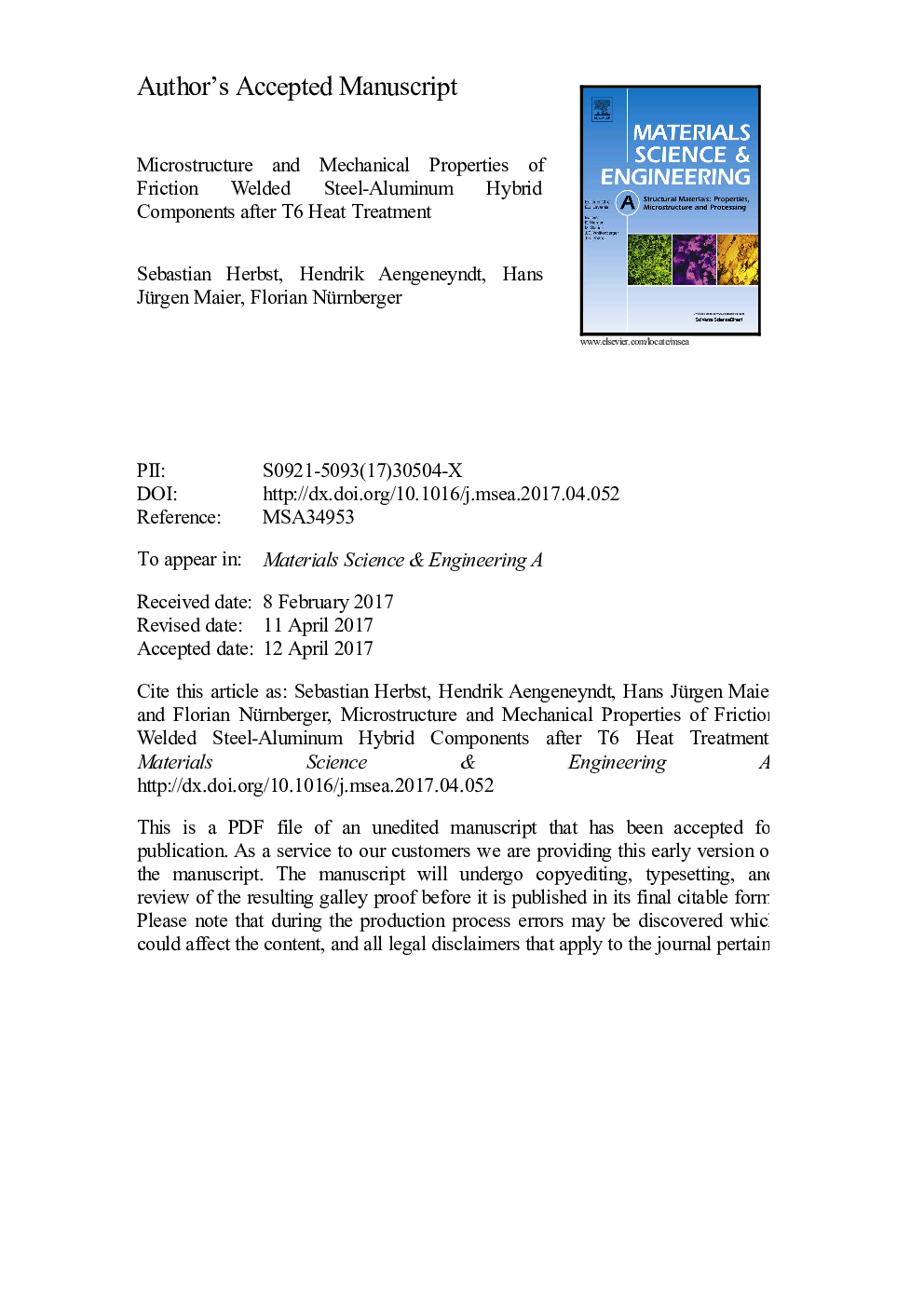| Article ID | Journal | Published Year | Pages | File Type |
|---|---|---|---|---|
| 5455989 | Materials Science and Engineering: A | 2017 | 30 Pages |
Abstract
In the present study, friction welded rods made of AW6082 aluminum alloy and 20MnCr5 steel were subjected to different T6 heat treatments of solution annealing and aging. The bond strength of the joints was determined using tensile tests and the intermetallic compound (IMC) layer thickness along the bond zone was measured by scanning electron microscopy (SEM) analyses. It is shown that bond strength strongly depended on the annealing temperature and duration. For an annealing temperature of 500 °C, a process window could be established that led to an increase in bond strength compared to the as-weld condition. The IMC-layer thickness was found to be distributed inhomogeneously along the bond zone and the mean IMC-layer thickness showed parabolic growth behavior. With increasing mean IMC-layer thickness, the bond strength decreased linearly. The fracture surfaces of tensile test specimens were analyzed by SEM and are discussed with respect to the corresponding bonding strengths and failure mechanisms. It is shown that the IMC-layer / steel interface seems to play an important role for bond strength.
Keywords
Related Topics
Physical Sciences and Engineering
Materials Science
Materials Science (General)
Authors
Sebastian Herbst, Hendrik Aengeneyndt, Hans Jürgen Maier, Florian Nürnberger,
